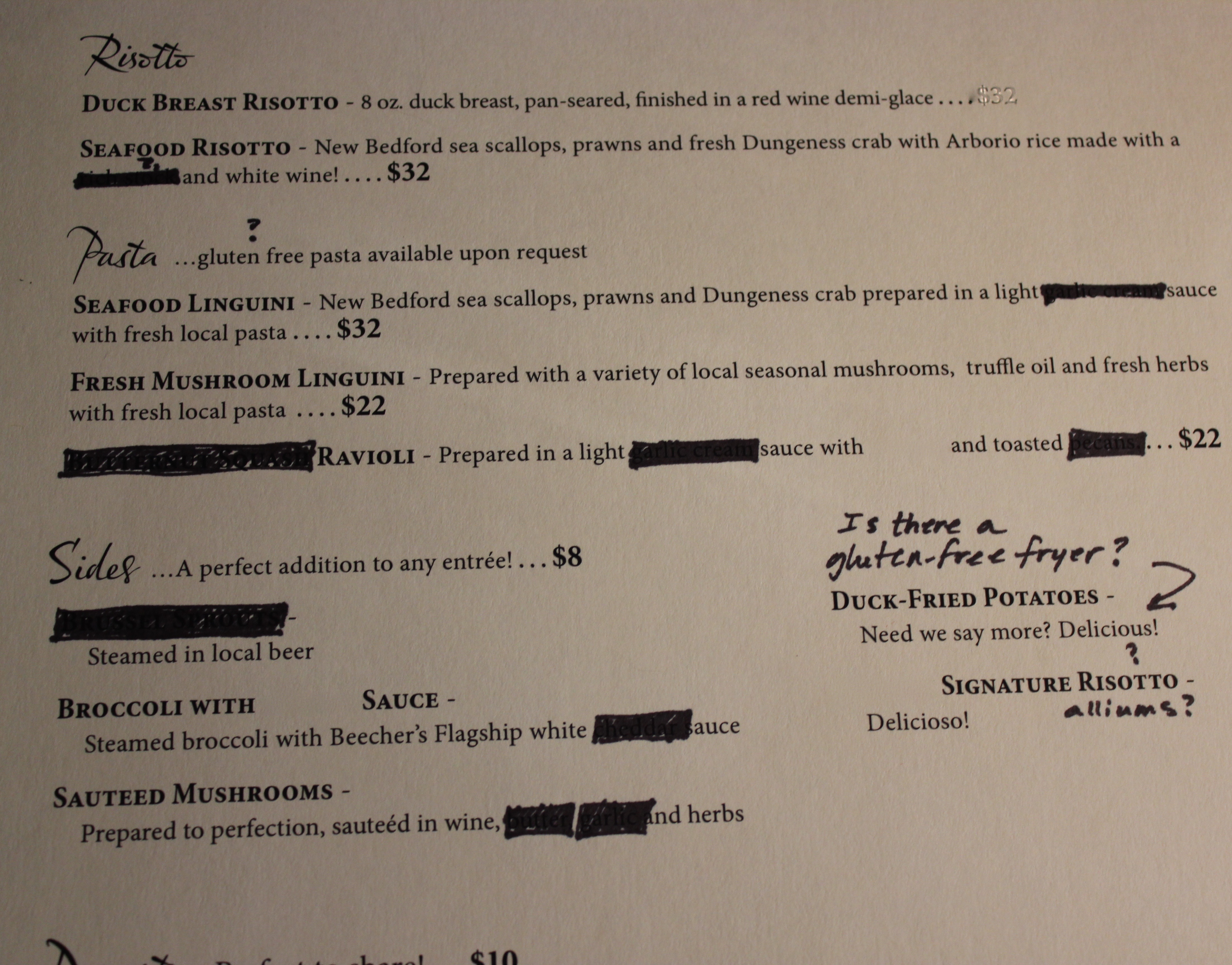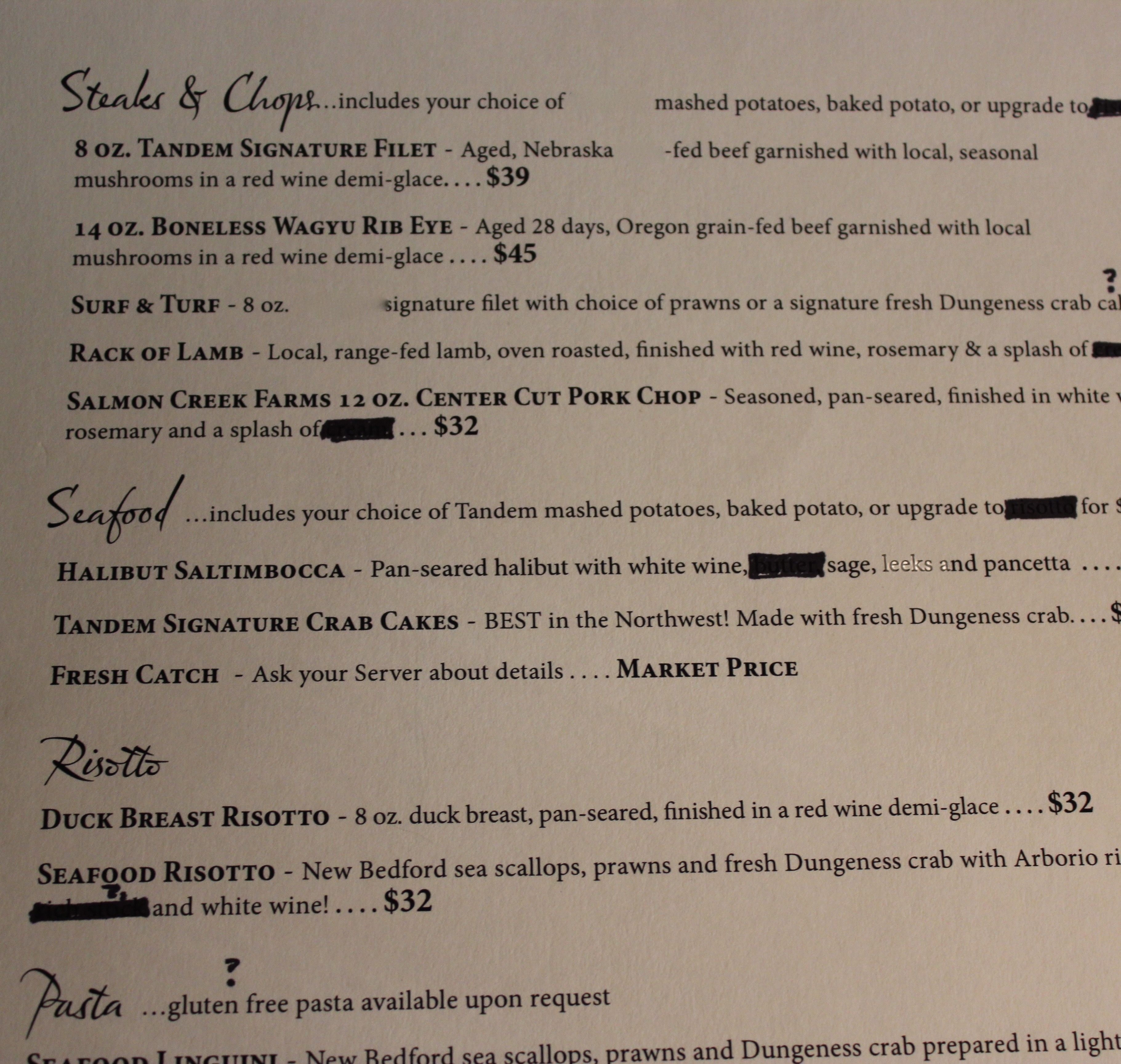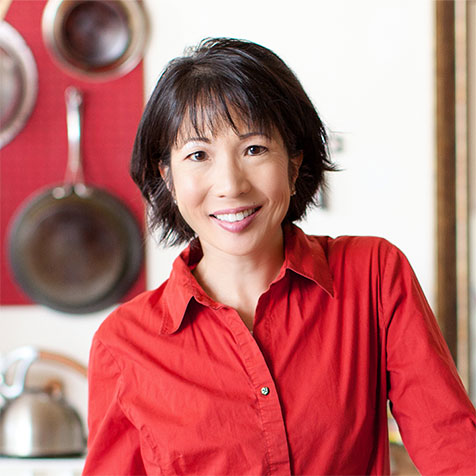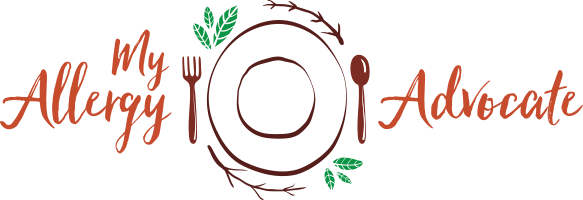A Menu Redacted
When I first started talking to others about food allergies and Celiac Disease, I began by trying to describe what food allergies are. As in, “Here are the medical definitions, and here’s what to look out for, and by the way, here’s how to keep me and others around me safe.”
End of story. I just want to eat, feel good, and not be sick.
And really, if that was all this was about — this website, these descriptions, and what I can’t eat — there would be nothing left to share, and no discussion. By now, you know that there is plenty of discussion, thus the many blogs on the subject.
Yet time and time again, I run into people who are truly curious about how I, and millions of others, live with a medically restricted diet due to both multiple food allergies and intolerances, and an autoimmune disease such as Celiac Disease.
After I found out I had Celiac Disease, I saw some improvement on the standard GF diet, which focuses on a strict adherence to a diet free of barley, wheat, and rye. I still had a Grumpy Tummy that would react to foods such as corn, quinoa, chia seeds, gluten-free oats, gluten free baked goods and breads containing soy and xanthan gum. Eating these foods didn’t cause the same widespread inflammatory response in my gut that gluten did, but they kept me sick, weakened, and fatigued.
You can understand that I developed this mental complex that maybe I was just a food pariah: a one-off person, alone in my experience of food intolerance. The problem with that kind of thinking is that it was not only counterproductive, it simply wasn’t true.
There are millions of us. There are millions of YOU, if you too suffer from one or more food intolerances, allergies, or a medically-restrictive diet.
During the “Grumpy Tummy” months, I encountered others who would be perusing the same aisles of the grocery store, turning items over to read ingredients, and putting them back on the shelves. We’d introduce ourselves, compare notes, and have these, “Me too!” moments after one of us would say, “I can’t eat anything with soy in it,” or “Gluten free oats make me feel sick when I eat them.”
It wasn’t very long before I realized there were tons of people around me, all of us feeling alone, isolated, and freakish for having guts that just couldn’t handle the same foods everyone else seemed to eat without any problems. And I remembered thinking that someday I would figure out a way to convey to all these people how much we have in common, not just by comparing food restriction lists with judgment and criticism, but in some kind of creative image that allowed people to see through my eyes.
Thanks to a friend’s suggestion, I present to you just one of those creative images. I present to you, A Menu Redacted.
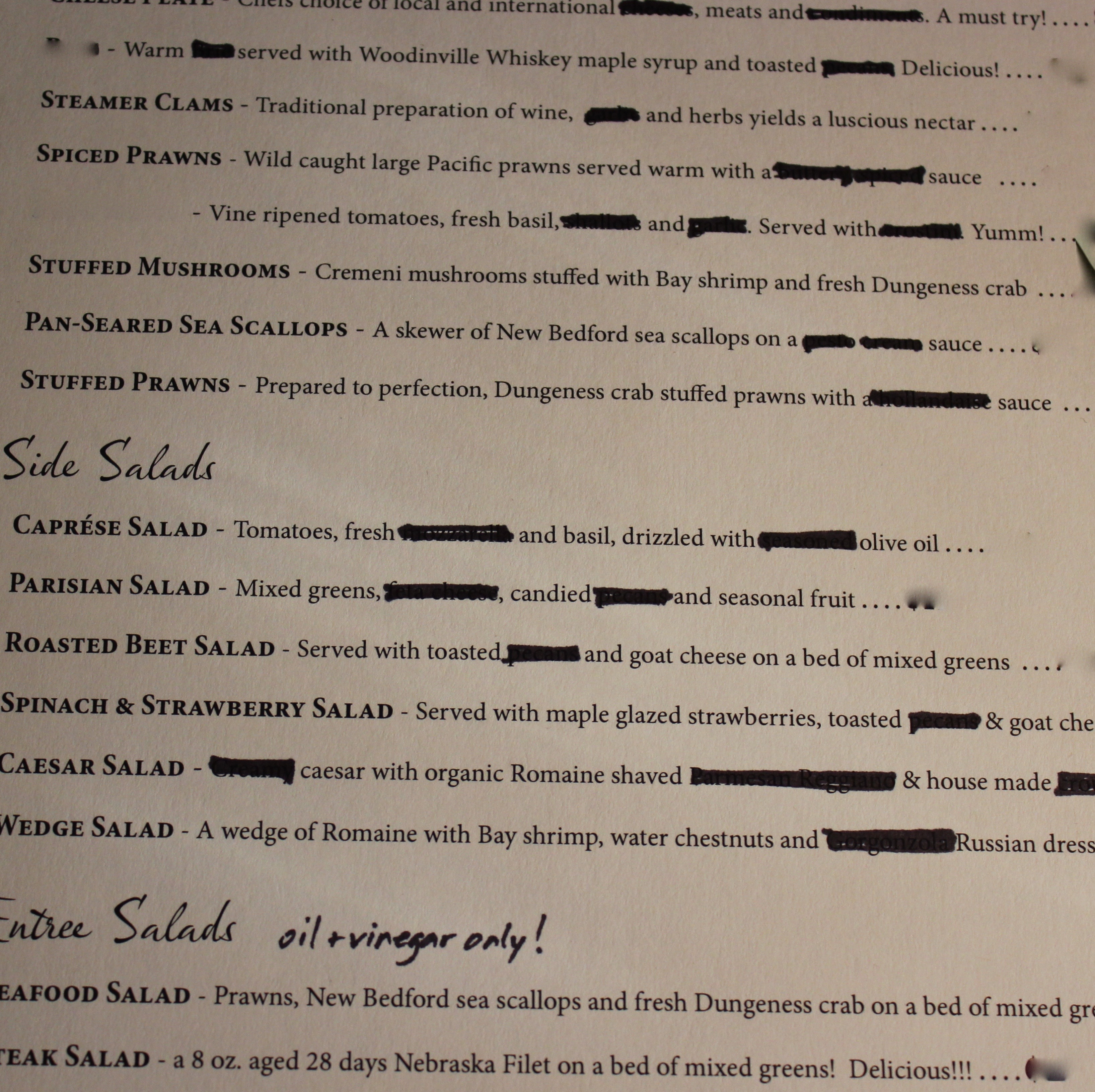
This is like reading over the shoulder of a person with severe food allergies and restrictions. This is a conception how a menu looks to me.
A Menu Redacted
First of all, let me state directly that I took this menu from a lovely restaurant (hey, they told me to take one, so I did), and to my knowledge, they serve good food in an attractive presentation.
At the moment of this menu redaction last month, I had an intention to return to the restaurant and order dinner. I wasn’t picking on this restaurant for anything unusual, except for its location.
The Food Prattle in My Head
At first glance, you’ll notice that almost no dish was free from something that had to be blacked out because it is prohibited. Blacked out items receive instant translations in my head:
- Is it possible to remove this item, or was it already pre-mixed, pre-marinated, or assembled together with something I can’t eat?
- If it is possible to remove the item, will I receive a substitute item?
- If I receive a substitute item, will there be an up charge? If so, is the up charge higher than $2?
- If I can’t order what I want, is there anything else I can eat that I want to eat? If so, is that dish priced exceptionally more than the other items? (It gets tiring to be recommended a filet mignon at every fine dining restaurant just because it is easiest to serve gluten free. First world problems, right?)
So that the server doesn’t get too much exercise for the evening running between our table and the kitchen to ask the chef our questions, I try to organize all my questions and the options together.
It ends up sounding a little bit like the scene in, When Harry Met Sally, when Sally orders a Chef’s salad and a piece of apple pie a la mode. Only, her order was based on her preference for heated pie, and my needs are based on necessity ; that is, foods that save me from an unplanned stop at the hospital, or couple of days hovering near a toilet.
The socially sticky aspect of ordering food in a restaurant is perception. See, the last thing I want the server, or my friends, or new acquaintances, to feel when they hear me bleating my questions aloud to the server is that I am somehow snobbish, picky, demanding, or aristocratic.
It makes a lot more sense to me to take a moment with the chef and go over the menu with him or her, asking what is possible in the kitchen. He or she is going to know how foods are prepared. If all foods share the same grill as gluten items, or all foods are cooked in soybean oil, changing the ingredients themselves won’t make much of a difference in the final equation.
Sometimes a menu can end up having far more yes’s than no’s than the menu itself immediately conveys. Conversely, the menu description can be far from detailed. If you don’t drill down to individual ingredients in a sauce, for example, you might miss an ingredient like soy or corn. That’s why I wrote a few question marks on the menu redaction, so you could see what I am thinking.
You’d think I’d be safe with burgers, and for the most part, you’d be right. That is, as long as the menu states that the meat they use is 100% pure beef with no added fillers. Fillers are almost always some mix of soy, corn or wheat. Gluten free fryers are safer for me than a fryer used for all fried foods, gluten or not gluten, yet the majority of my city’s restaurants do not offer a gluten-free fryer. There’s a whopper-sized question mark for that!
Just so you know I wasn’t joking about trying out this restaurant, you’ll be pleased to hear that I ate there last evening with my sister. She ordered the halibut, and because the filet mignon was not available, I had the Wagyu steak with mashed potatoes and broccoli. The meat was not pre-marinated, the cooking oil was not soy, and the mashed potatoes were free of dairy; the chef withheld the wine demi-glace at my request.
Our server took my allergies seriously, writing each prohibitory category down (nuts, dairy, alliums, gluten, beans, corn) and suggested substitutions. He double checked everything, and appeared knowledgeable; he was even friendly in the banter around food allergies, and laughed at my joke that if I couldn’t have wine or coffee, it would be “all over” (it wouldn’t, but I know this usually gets a good laugh).
What’s the name of this restaurant, you might ask? It’s the delightful Tandem Wine Bar in Woodinville, WA. And as I suspected, not only did I have an enjoyable, delicious, and balanced meal, my stomach feels great. From the most sensitive Celiac and food allergic person you might know, I give it the thumbs up.
If you like how redacting a menu helps convey to others around you how you approach eating out, let me know by leaving a comment. I plan to include future menu redactions, and I’d be happy to redact any menus you send to me if you request my business address.
Happy Eating! And do everything to make food fun again!


